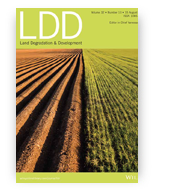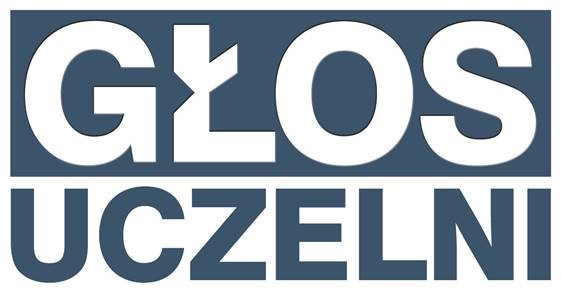
Research papers of the month – March 2022
We present the highest-score research papers of March 2022. These papers have ben published in journals with the highest Ministerial score – 200 points.
Toxicity studies on sediments near hydropower plants on Sleza and Bystrzyca rivers, Poland, to establish a possible use for soil enrichment
Paweł Tomczyk, Bernard Gałka, Mirosław Wiatkowski, Aleksandra Wdowczyk, Łukasz Gruss
Land Degradation & Development
Ministerial score = 200.0
Journal Impact Factor (2020) = 4.977(Q1)
 The aim of this study is to analyze the toxicity of the sediments accumulated in the vicinity of hydropower plants (HPs) on the Ślęza and Bystrzyca rivers in Poland and the possibility of using these sediments for soil enrichment purposes. Thus far, there has been little comprehensive research related to the analysis of the impact of HPs on the properties of sediments. The analysis of the granulometric composition, physicochemical properties, heavy metals (HMs) content in sediments and the growth of three plant species was carried out, including toxicity (HMs) and germination indices (plants). Most parameters were significant between the points upstream and downstream of the analyzed HPs. It has been shown that the most dangerous toxic factor is the high concentrations of Cu, Ni, and Zn in the sediments upstream of the HP on the Ślęza. In most cases, the HM content was observed as decreasing downstream the HP (e.g. Cu in Ślęza: average of 13.44 times), a result of changes in the particle size composition and accumulation of sediments at the site of the dam wall. Typically, the sediments tested stimulated growth in the plant species studied in comparison with the control groups (e.g. Germination Index for Sorghum saccharatum, Bystrzyca: 273.5% downstream HP). The C:N ratio increased downstream of the HPs by an average of 37.11% for the Ślęza River and 10.88% for the Bystrzyca River. The requirements for composting material were not met; however, the sediment could be used to enrich soils with an excessively wide C:N ratio.
The aim of this study is to analyze the toxicity of the sediments accumulated in the vicinity of hydropower plants (HPs) on the Ślęza and Bystrzyca rivers in Poland and the possibility of using these sediments for soil enrichment purposes. Thus far, there has been little comprehensive research related to the analysis of the impact of HPs on the properties of sediments. The analysis of the granulometric composition, physicochemical properties, heavy metals (HMs) content in sediments and the growth of three plant species was carried out, including toxicity (HMs) and germination indices (plants). Most parameters were significant between the points upstream and downstream of the analyzed HPs. It has been shown that the most dangerous toxic factor is the high concentrations of Cu, Ni, and Zn in the sediments upstream of the HP on the Ślęza. In most cases, the HM content was observed as decreasing downstream the HP (e.g. Cu in Ślęza: average of 13.44 times), a result of changes in the particle size composition and accumulation of sediments at the site of the dam wall. Typically, the sediments tested stimulated growth in the plant species studied in comparison with the control groups (e.g. Germination Index for Sorghum saccharatum, Bystrzyca: 273.5% downstream HP). The C:N ratio increased downstream of the HPs by an average of 37.11% for the Ślęza River and 10.88% for the Bystrzyca River. The requirements for composting material were not met; however, the sediment could be used to enrich soils with an excessively wide C:N ratio.
DOI:10.1002/ldr.4210
Experimental 2D Extended Kalman Filter sensor fusion for low-cost GNSS/IMU/Odometers precise positioning system
Adrian Kaczmarek, Witold Rohm, Lasse Klingbeil, Janusz Tchórzewski
Measurement
Ministerial score = 200.0
Journal Impact Factor (2020) = 3.927(Q1)
 The development of satellite techniques and the availability of mobile devices with built-in multi-GNSS (Global Navigation Satellite System) receivers allow the determination of position with increasing accuracy. At the same time, the requirements of users as to the accuracy of positioning are increasing, while the low production costs of the device must be maintained. This paper presents a loosely coupled integration of low-cost sensors (GNSS, IMU (Inertial Measurement Unit), and an odometer) with the use of a nonlinear Kalman filter and a dynamic weight matrix. The integration model was developed for horizontal (2D) components with the simultaneous determination of the azimuth of the test platform. The tests were carried out in the conditions of an open horizon, with partial obscuring of the horizon (passage under an open-work steel structure) and along walls. In this way, the working conditions for an autonomous lawn mower, which are now increasingly used by citizens, were simulated. The position accuracy obtained in these tests is better than 5 cm for horizontal components and better than 1° for the azimuth.
The development of satellite techniques and the availability of mobile devices with built-in multi-GNSS (Global Navigation Satellite System) receivers allow the determination of position with increasing accuracy. At the same time, the requirements of users as to the accuracy of positioning are increasing, while the low production costs of the device must be maintained. This paper presents a loosely coupled integration of low-cost sensors (GNSS, IMU (Inertial Measurement Unit), and an odometer) with the use of a nonlinear Kalman filter and a dynamic weight matrix. The integration model was developed for horizontal (2D) components with the simultaneous determination of the azimuth of the test platform. The tests were carried out in the conditions of an open horizon, with partial obscuring of the horizon (passage under an open-work steel structure) and along walls. In this way, the working conditions for an autonomous lawn mower, which are now increasingly used by citizens, were simulated. The position accuracy obtained in these tests is better than 5 cm for horizontal components and better than 1° for the azimuth.
DOI:10.1016/j.measurement.2022.110963










